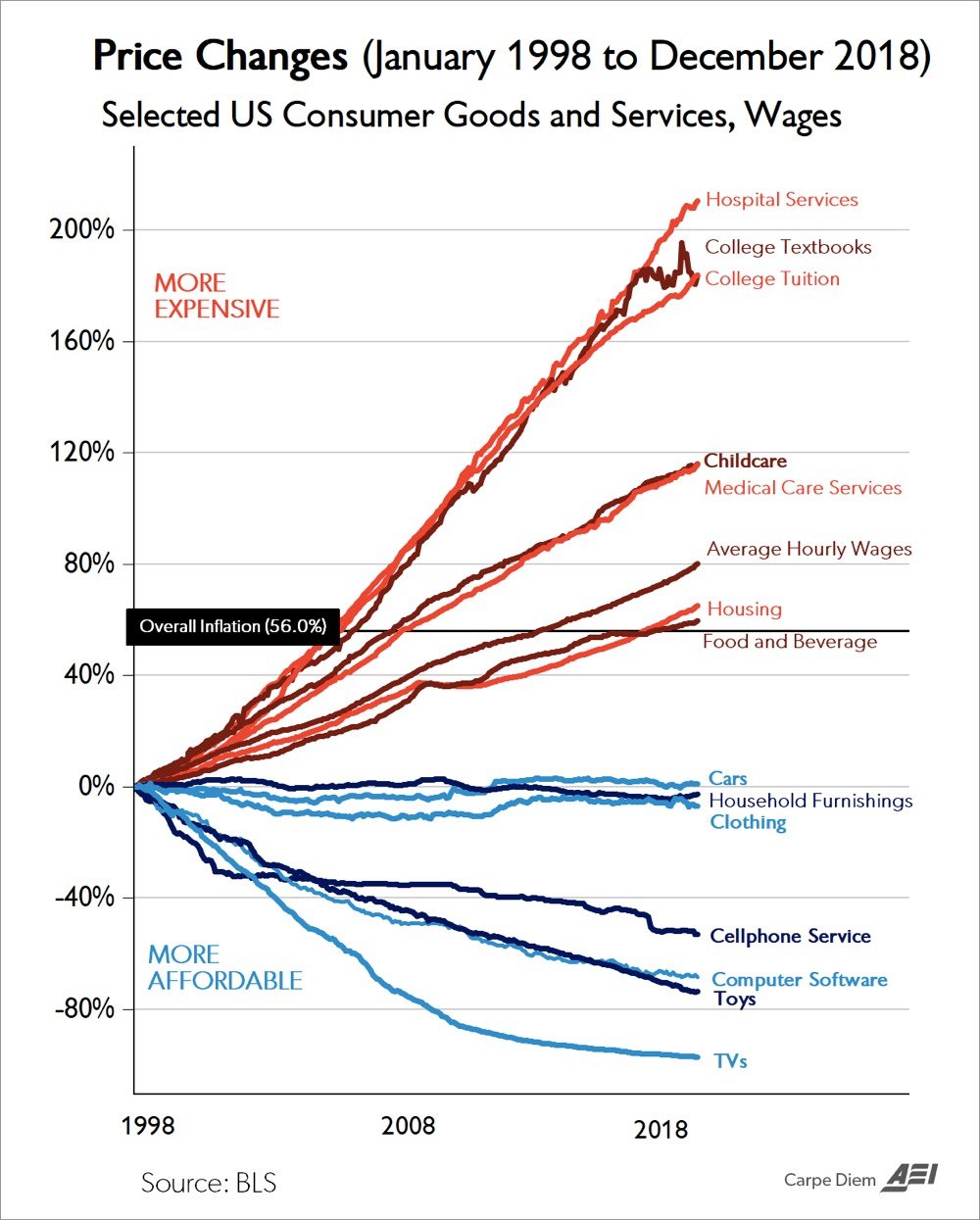Cheap TVs and Exorbitant Education, Modern America in One Chart
Economist Mark Perry has updated for 2018 his chart of price changes of selected goods over the past two decades.

This graphic has been referred to a “the Chart of the Century” because it explains a lot about the socioeconomic life in the United States in just a quick glance.
During the most recent 21-year period from January 1998 to December 2018, the CPI for All Items increased by exactly 56.0% and the chart displays the relative price increases over that time period for 14 selected consumer goods and services, and for average hourly earnings (wages). Seven of those goods and services have increased more than average inflation, led by hospital services (+211%), college tuition (+183.8%), and college textbooks (+183.6%). Average wages have also increased more than average inflation since January 1998, by 80.2%, indicating an increase in real wages over the last several decades.
The other seven price series have declined since January 1998, led by TVs (-97%), toys (-74%), software (-68%) and cell phone service (-53%). The CPI series for new cars, household furnishings (furniture, appliances, window coverings, lamps, dishes, etc.) and clothing have remained relatively flat for the last 21 years while average prices have increased by 56% and wages increased 80.2%.
As various parties have noted, the goods & services that have gotten more expensive tend to be things that people need, aren’t subject to international competition, and are subject to more government regulation. The goods & services that have gotten cheaper tend to be things that people want, are subject to international competition, and are less regulated.
If healthcare & education costs had dropped as much in the last two decades as the price of TVs, toys, and software has, we’d be all set! As it is…





Stay Connected